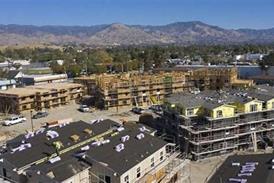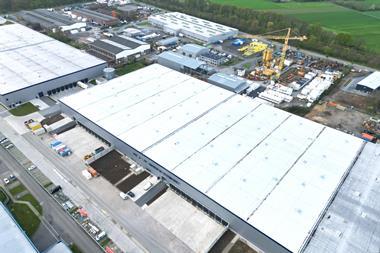The first half of 2016 saw the UK’s commercial property-loan market continued to grow and show signs of stabilisation despite uncertainty ahead of the UK’s referendum on membership of the European Union, according to the half-yearly De Montfort Commercial Property Lending Report.
At mid-year 2016, the total amount of outstanding debt for UK commercial property was £173.4bn (€192.1bn), up from £168.4bn at year-end 2015 and an increase of 3%.
Despite the increase in loan-book size, new loan originations fell by 13% to £21.4bn compared with £24.7bn in the first half of 2015 and £53.7bn for the whole of that year.
The share of insurance companies, the second-largest category of new loan originators last year, declined from 16% to 10% in the first six months of 2016.
UK banks and building societies saw a sharp rise in their share of new origination, from 34% at the end of 2015 to 44% at mid-year 2016.
US banks saw their share decline from 14% to 7%.
Peter Cosmetatos, chief executive at CREFC Europe, said the data supported the view the UK property-lending market was “generally stable and healthy coming into the Brexit vote”, which, he said, had helped the industry “weather the shock of the result”.
“What is really striking,” he added, “is the way UK banks and building societies recovered market share in origination as North American banks and insurers, in particular, held back during the first half of the year.
“It will be fascinating to see where origination comes from in the second half.”
Ion Fletcher, director of policy (finance) at the British Property Federation, said the reduction in new loan originations and activity reflected a general market slowdown.
“Uncertainty ahead of the EU referendum may have played a part, but there were signs the property market was cooling off anyway,” he said.
The large majority of loan exposures (89%) now have an LTV ratio of 70% or less, while only £4.5bn worth of loans, or 2.6% of the total aggregated loan book, was in breach of financial covenants or in default.
The report said lending organisations commented that virtually all of their problems related to loans written before 2009 had now been addressed, with no significant breaches or defaults recorded on new loans.
The average LTV provided by UK banks and building societies was 59% compared with 65.6% LTV at year-end 2015.
Lenders continued to move away from commercial development finance, with 11 organisations providing data for finance of fully pre-let development at mid-year 2016, compared with 18 at mid-year 2015.
The average interest rate margin was 348 basis points at mid-year 2016, an increase from 339bps reported at year-end 2015.
A lack of funding for development remains a problem.
Lenders, the report says, are lending against a narrower range of property than in the past.
Fletcher said recent regulatory changes might “inadvertently be driving concentration risk among lenders”.
De Montfort’s report found a clear distinction between prime and secondary property loans, with fewer lenders willing to quote margins for secondary property.
The average senior margin for secondary offices, retail and industrial ranged from 279bps to 305bps, similar to that recorded at the end of 2015.















No comments yet